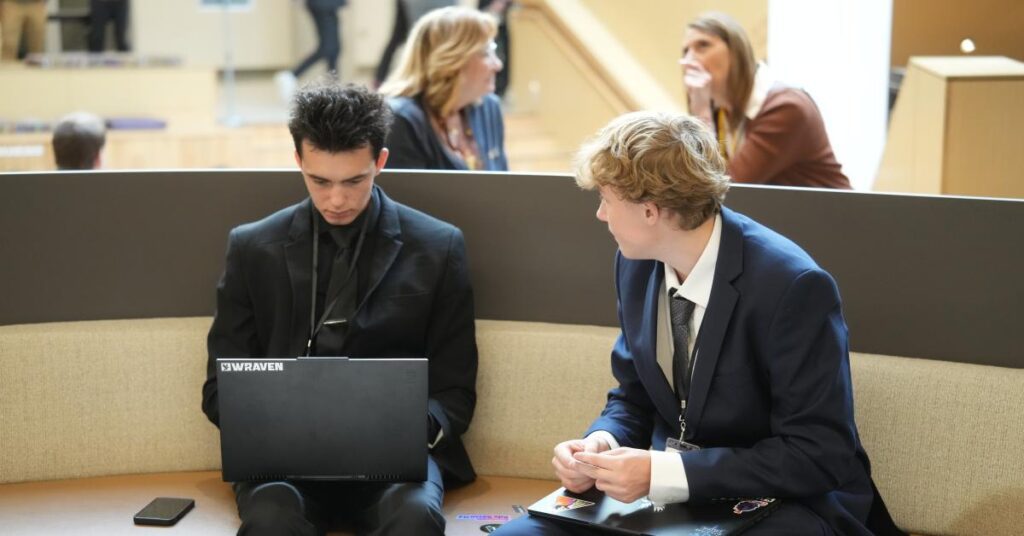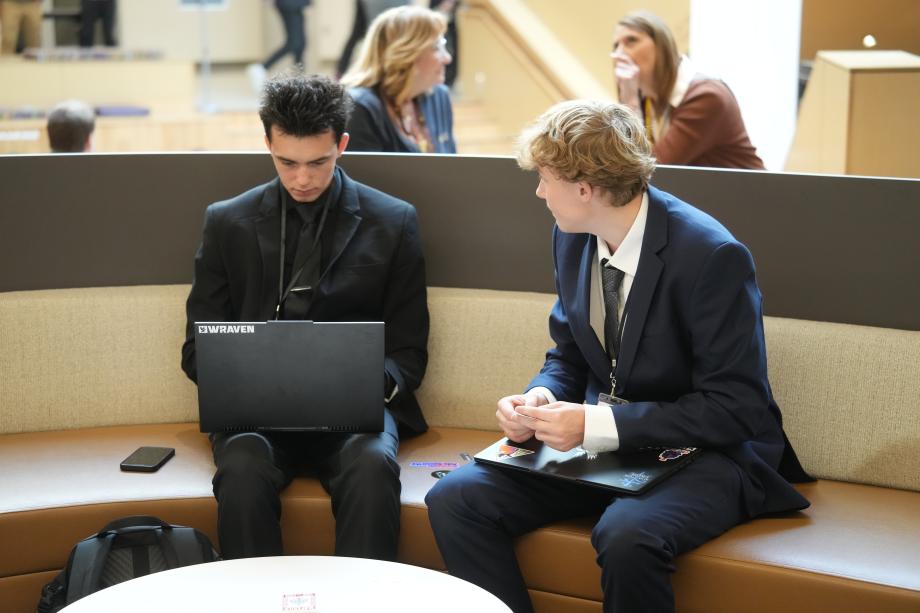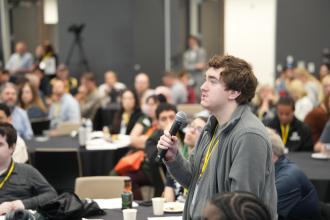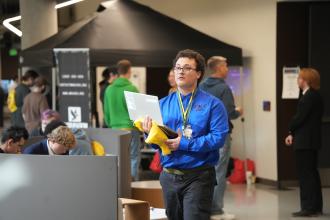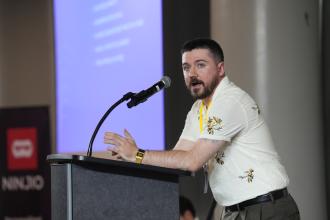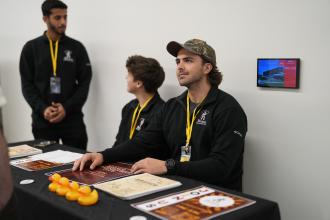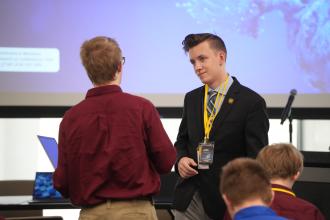KALAMAZOO, Mich.—In a world increasingly connected by technology, staying ahead of the curve on cybersecurity is crucial. Western Michigan University’s annual Cybersecurity Summit brings together industry and education leaders, technology professionals and students to learn about the latest threats and challenges in the tech world.
“This year was a huge success! We had strong student participation and a diverse planning team, twice as many sponsors as last year and more sessions than ever,” Garald Barton IV, marketing manager for Western’s Office of Information Technology, says of the Oct. 9 event.
interested in technology-related careers were a driving force in planning and executing the summit, a process Barton says was vital for the event’s success.
“It empowers them to lead, innovate and grow. Their contributions go beyond logistics; they shape the content, bring fresh perspectives and create meaningful learning experiences for their peers,” Barton says. “It’s a perfect example of how Experience-Driven Learning prepares students for real-world challenges by giving them ownership and responsibility in high-impact events.”
One unique contribution this year was a capture the flag competition developed by the Western Research Advisory for Vulnerabilities, Exploits and Networks (WRAVEN), a registered student organization (RSO) dedicated to cybersecurity. The competition involved a series of challenges ranging from decrypting a high-level encryption algorithm to locating a hidden file or finding the exact location of a satellite image provided.
“The main goal of the competition was to get people out of their comfort zones,” says summit core planning team member Lochlan McElroy, a cybersecurity student and the founder and president of WRAVEN. “It’s a fun way to learn cybersecurity skills.”
Expert analysis
In addition to the competition, sessions and panel discussions throughout the day gave attendees the opportunity to hear from Western faculty and staff members, industry professionals and cybersecurity experts, such as Brett Leatherman, assistant director of the FBI’s Cyber Division.
In a full-circle moment, WMU cybersecurity alumnus Kane Greer, B.S.’24, spoke about making the transition from college to career. He works as a cybersecurity specialist for the city of South Bend, Indiana, creating and implementing policies to safeguard the city’s cyber infrastructure.
“Western has definitely set me up in a way that is so good foundationally that everything else can just kind of fall in place from a career perspective,” he told students, emphasizing the impact of engaging with professors in the cybersecurity program and getting involved outside the classroom. Greer honed his leadership skills as founder of the Bronco Cybersecurity Club RSO and was part of the TechNext program, an immersive experience that places students in technology hubs in San Francisco, Los Angeles and Seattle, where they learn about tech, venture capital, entrepreneurship and the arts.
“Western has so many different programs outside of your discipline that I would definitely recommend,” Greer said. “I was the first cybersecurity student for TechNext, so I was able to build a lot of different relationships with students and professionals from different disciplines like programming, accounting and human resources.”
The WMU Cybersecurity Summit has grown exponentially over the past four years, with more than 400 people taking part in the daylong event this year—three times the number at the inaugural summit. cybersecurity professionals and vendors to K-12 educators and students interested in technology to Western students, faculty and staff.
While education was a key aspect of the summit, the connections attendees came away with were just as impactful.
and build relationships with people in the industry,” says summit core planning team member Caden Carr, a business information systems major and the president of the Business Technology Network RSO. He knows the connections he makes at events like this could turn into job opportunities or professional references down the road. “I truly believe your network is your net worth.”
With more than 60 high school and community college students in attendance, the summit was also a pipeline for Western’s cybersecurity program to continue its growth.
“Western is really on this run of wins. We have a new president, new buildings and we’re really competing on a national level. And the cybersecurity summit is another crucial building block to get more students involved in tech and make Western more competitive in the industry,” says Carr.
Involvement in the cybersecurity summit also inspired Carr and fellow core planning team member Nick Ford to create an entirely student-run summit of their own. They hosted their first Tech Jam earlier this year, incorporating a tech startup pitch competition as well as a social engineering competition.
“We partnered with the Bronco , so we had actors there. And it was kind of like a live performance that you could be part of, which was pretty cool. People really liked both activities,” says Ford, a cybersecurity student and the president of the Bronco Cybersecurity Club.
The next Tech Jam is planned for spring 2026.
McElroy hopes opportunities for students to engage with cybersecurity continue to expand—at Western and beyond.
“The more experience you have with capture the flag events, with those sorts of competitions, with conferences, everything, it just makes you more well-rounded in the cyber field,” he says. “The WMU Cybersecurity Summit … brings together all the things you should be doing to grow yourself as a cyber professional.”
For more WMU news, arts and events, visit WMU News online.

